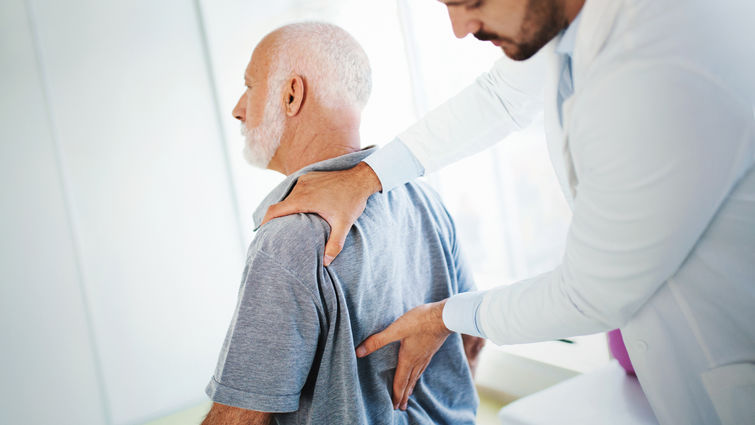
September is National Pain Awareness month, a time dedicated to raising public awareness of issues in the different kinds of pain and pain management. As such, Eugene Pak, MD a pain management physician at Loma Linda University Health Pain and Spine Center, shares insight into one the most common pains experienced in the United States — lower back pain, affecting 80% of American adults in their lifetime. Here is what you need to know.
What causes lower back pain? According to the National Institute of Neurological Disorders and Stroke (NINDS), a majority of lower back pain is due to degeneration of the spine from normal wear and tear of the joints, discs and bones as we age. Pak says other common causes include injury, obesity, pregnancy, poor posture and sleeping positions. Back pain can be acute, defined as pain that has lasted less than a month or it can be chronic defined as pain that persists for three months or longer. Pak says studies have shown that mental health can be key factor in those suffering lower back pain. Up to 50% of back sufferers experience some form of depression from their pain.
When should I seek medical attention for my lower back pain? Pak says if you have experienced lower back pain that has not subsided within one to two weeks, you should make an appointment with your physician. From there they can refer you to a pain specialist. He or she may perform a physical or order neurological and imagining tests to determine the cause of your pain and find the treatment option that is best for you. Pak also notes that if you are experiencing other symptoms with your lower back pain such as abdominal pain, bowel or bladder incontinence, fever, or loss of strength or sensation of the groin or legs, you should seek your doctor and be sure to share all the symptoms you are experiencing.
What can I do to treat my back pain? There are many treatment options for lower back pain, but what is right for you depends on whether the pain is acute or chronic.
Treatment options you pursue:
- Pak recommends proper rest or sitting for short periods of time such as 10-15 minutes. One should sit upright with a back support such as a rolled-up towel at the curve of the back, with hips and knees at a right angle. In addition to rest, Pak notes that clinical trials have shown those who return quickly to normal activities as opposed to reduced activity for extended period of times shows better treatment results.
- Over-the-counter pain medication can be helpful to reduce pain and allow you to participate in activities that can help healing, such as exercise.
- When at home, icing or heating the pain area may provide some relief. Pak recommends icing or heating pain areas for no more than 20 minutes at a time. Icing is best used to treat new injuries or pain. Heat is best applied for aches, stiff muscles or chronic pain. When used appropriately, both ice and heat have equal efficacy and are safe to use.
- According to Pak, exercise and weight reduction are critical to healing lower back pain. Weight can influence the pressure on your lower joints, causing more pain. In addition to weight reduction, movement such as core exercises, swimming, or walking are known to be the most effective treatments. These help reduce the stiffness of ligament and tendon connective fibers, improve mobility, and prevent injury and tears of tissues under stress. Exercising also releases natural endorphins, which can help minimize the frequency and severity of pain episodes, elevate mood and decrease reliance on medication.
- For some, alternative approaches such as chiropracty and acupuncture care can help alleviate symptoms.
In addition to these treatments, Pak shares other pain management options that have shown efficacy in reducing back pain, which can include interventional injection therapies, rehabilitation, physical therapies, traction, ultrasound and Transcutaneous Electrical Nerve Stimulation (TENS). Pak assures sufferers that relatively few people with back pain need surgery. That option is reserved for when other treatments have failed to control the pain.
Pak’s key takeaway about lower back pain? Remember you are not alone in your battle with lower back pain, and it is manageable. “Currently, 1 in 10 people in the U.S. suffer from lower back pain,” Pak says. “There is hope because the pain is manageable. Through a multidisciplinary whole person approach of healing such as lifestyle changes, medication, psychological awareness, therapy, treatments and other modalities — back pain can be managed to help make one whole again.”
Loma Linda University Health’s Pain and Spine Center is committed to successful treatment and management of pain- and spine-related disorders. Learn about our services at https://lluh.org/services/pain-spine or schedule an appointment by calling 909-558-4484.
